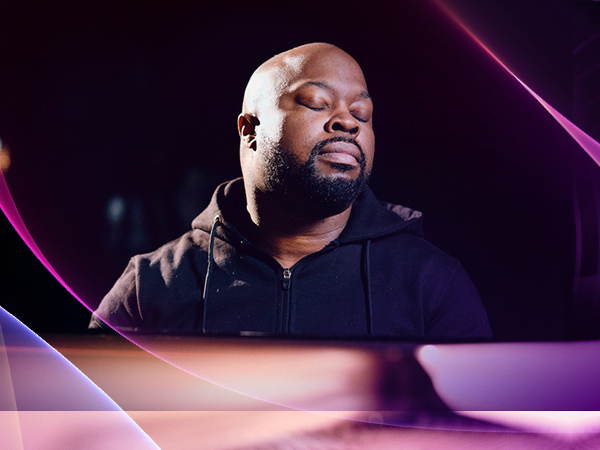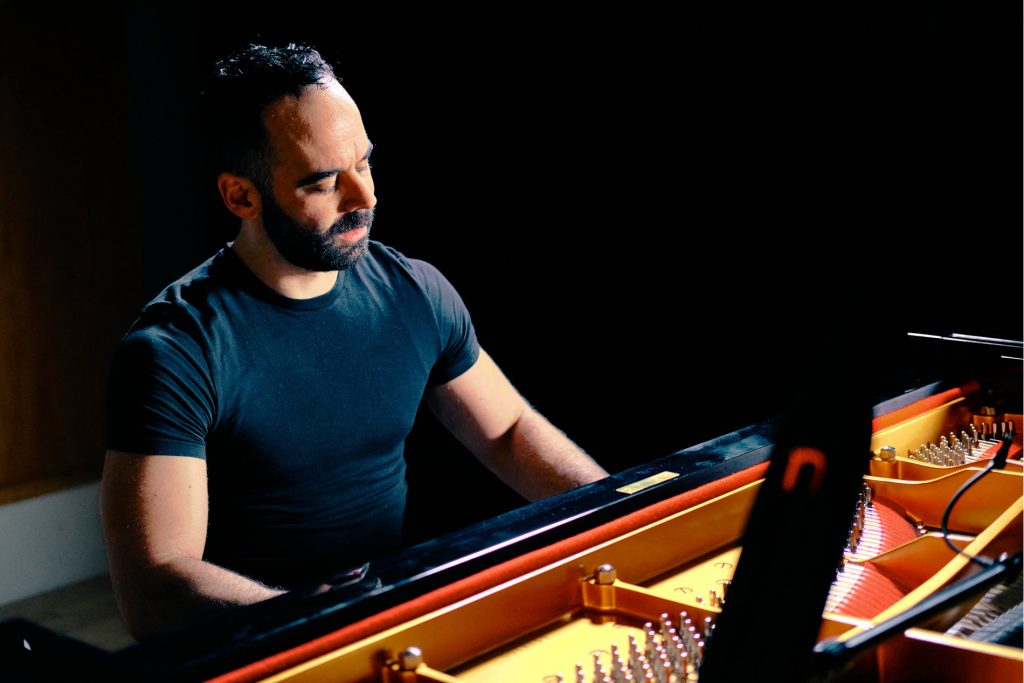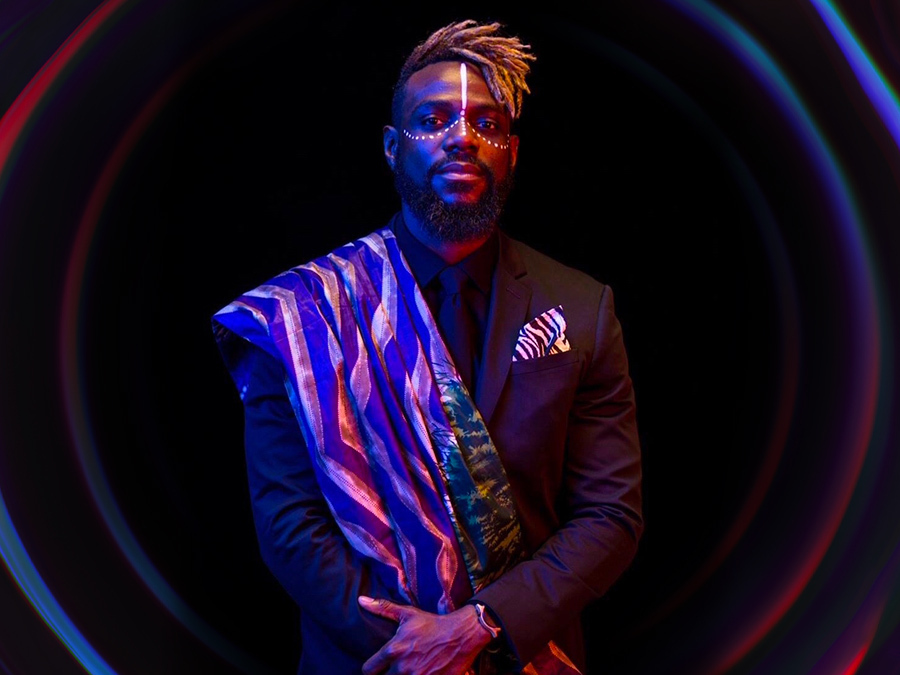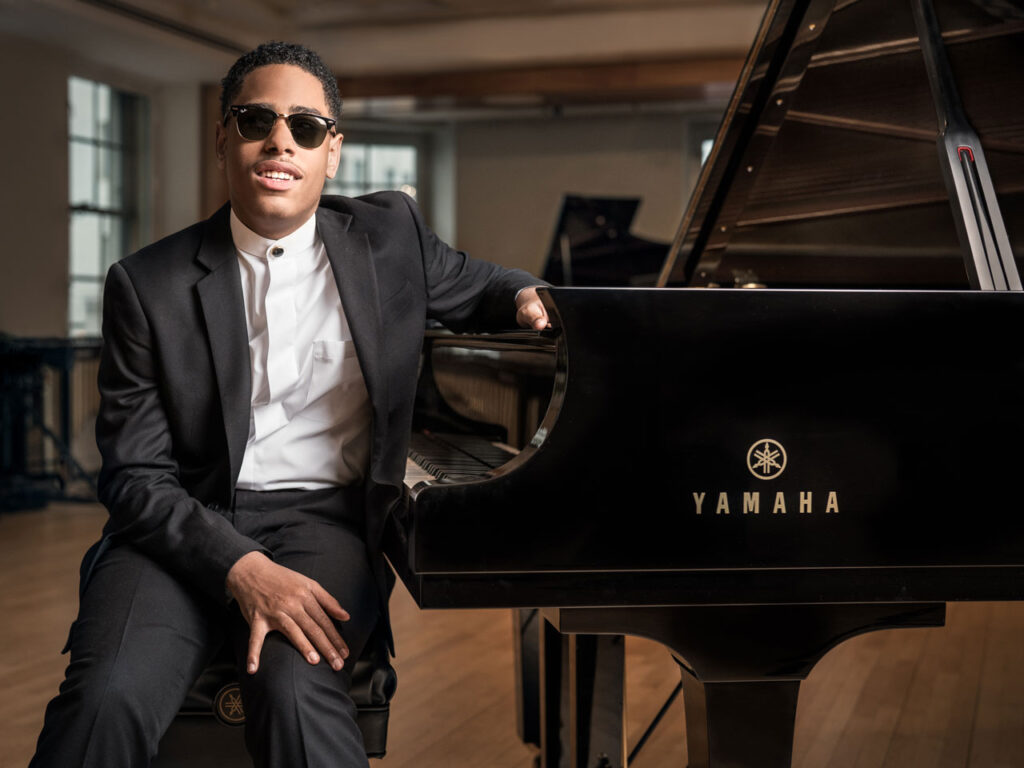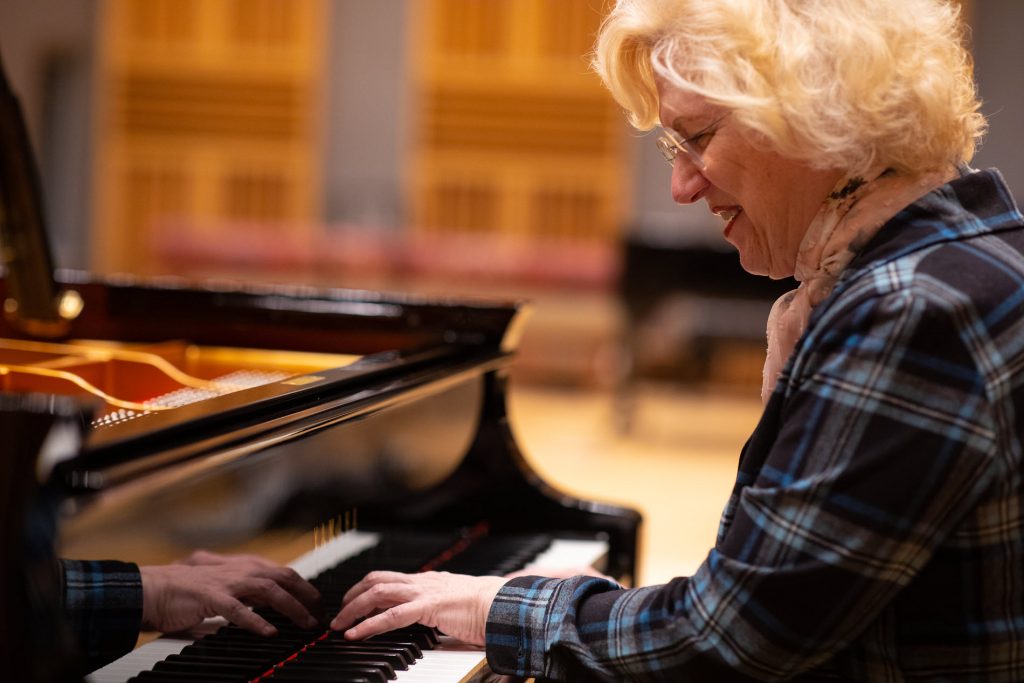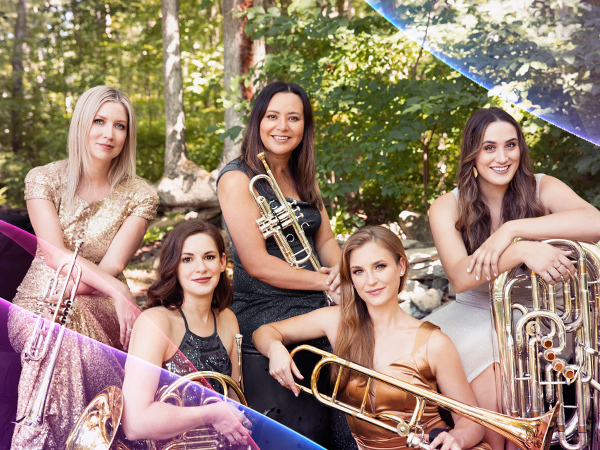Tagged Under:
Maria Finkelmeier’s Multi-Sensory Music
Exploring themes of identity and the collective human experience.
Yamaha Artist and percussionist Maria Finkelmeier’s “Superhero Butterfly” is a dazzling fusion of live music performance, visuals and technology. Inspired by her daughter’s Halloween costume, the multidisciplinary piece celebrates the beauty of holding multiple identities as truth.
Finkelmeier, like her work, has many identities: digital media artist, sonic explorer, musician, composer, educator, entrepreneur. A trailblazer in experiential art, she blends music and technology to craft large-scale performative works that provoke reflection and encourage connection.
Whether performing at Carnegie Hall or Fenway Park, Finkelmeier incorporates unconventional sounds and vibrant visuals to transform iconic places into settings for immersive experiences that transcend genres. Through her company, MF Dynamics, and as a professor at Berklee College of Music, she empowers emerging artists, cultivating community and collaboration while providing them with the tools to thrive in their creative pursuits.
We recently caught up with her to discuss her background, work and advice for young artists looking to enter the field.
ESTABLISHING A UNIQUE VOICE
You’ve been a percussionist since grade school. When did you start composing?
I took a couple of composition classes throughout my years at Ohio State University and the Eastman School of Music, but getting out of school and stepping foot in the real world was when I started to say, “I love music, I love making noise, I love percussion, but what am I going to say with this?” I was in my mid-20s when I sought mentorship in composition and improvisation and really started to focus on my voice as an artist and not just as someone who plays music.
Who were your early influences?
When I really got into composition, I was living in northern Sweden. I was on one hand a really big percussion nerd listening to NEXUS Percussion and trying to understand what ragtime music sounded like and why that is important to our industry, but I was also listening to a lot of avant-garde experimental music. There was this really big scene in Sweden where people were using electronics and non-metric ideas.
INVITING ENGAGEMENT
Why is it important for you to bring observers into your performances?
I’m not a songwriter, so a lot of times when I am creating a piece of work it is a bit more abstract. I love that place because it allows an audience member to put themself in the world that we’re creating. But I also feel like it is helpful to invite them to be a part of the process, so they see themselves in what we’re doing.
That’s parallel with how I’ve thought about my work in general: Art should represent the world that we’re living in, so I don’t want to see that differentiation between the person onstage and the person in the video or the person who is creating; I want us to all see it interwoven. I feel that by telling the stories of now, it has a deeper impact. It allows that audience member to have a more emotional connection with that experience.
Do you find that invites engagement beyond a single performance?
That’s the goal. I’ll give you an example. I created this project called “Threads of Assumption” with three other artists: Martha Rettig, Sofie Hodara and U-Meleni Mhlaba-Adebo. Sophie and Martha are designers and U-Meleni is a poet. We came up with this idea together to talk about bias from a multimedia perspective. We had our own stories to tell, but we wanted to invite people to think about bias, to think about their lived experience.
We sourced 44 conversations, and I used A.I. to turn the data that represented their emotions into music. U-Meleni turned the data into poetry, and Martha and Sofie turned the data into weavings. We built this massive loom and had people choose a color of thread that represents their lived experience and weave them together.
To do this, we brought on a partner that had video conferencing software in which we could record conversations, using an algorithm called LIWC — a language-learning and emotion analysis that allowed us to understand the sentiment of the conversations and see them as datasets. I got a whole bunch of numbers to play with, which was so fascinating as a musician.
The reaction we got from the audience was, “You were telling my story; I heard my story,” except we weren’t telling anybody’s story because it was all generated using artificial intelligence and data. The fact that we could represent so many people in the audience was really important. I hope they left with that and that they think about it in the future.
How did you view music’s role in the project?
The instrumental music was the most abstract expression in that space. Participants could see and feel color and feel the threads and they could weave it. And that was a very tactile experience. Words have weight, but music, where does that fit in? In hindsight, it became the glue that made these different artistic expressions come together.
The data was organized by negative emotion, neutral emotion and positive emotion. I used the positive numbers as melodic information; the neutral emotion became the harmonies; and the negative emotion became the really low bass lines. I essentially let the data tell me what pitches to use. Then I had to organize it all. It was a really interesting realization that the data and the stories really were leading the choices, but it did take the human to make it music.
It sounds almost like the process removes the cultural context from composing.
Totally. I feel like in music, as in math, there’s so many connections there. And I think I still probably hold some weight in cultural context, just in [terms of] my own education and in my own voice. But still, it did eliminate the individuality of the music. It really did make music that was composed by the 44 participants who shared their stories.
BEING ONE OF MANY
What led you to launch your company, MF Dynamics?
MF Dynamics is essentially a group of like-minded curious people coming from different spaces to create performance and public art projects integrating technology, but everything’s grounded in music. I grew up playing in orchestras, and marching band was a huge part of my life, so I have always understood the sense of being one of many and the power that we can create when we’re working together. I also knew I couldn’t be a master in motion tracking and artificial intelligence and digital art, but I can be curious enough to find the right people to join in.
One of your Berklee courses focuses on creative entrepreneurship. What are some ways artistry and creativity inform entrepreneurship?
I think musicians are innate entrepreneurs. For example: How do we listen as musicians? We are used to listening to many layers of music being performed. We’re used to listening and looking at body language to get cues to connect. We’re used to taking the energy of the room to advance it, to move it in different ways. Well, that’s what an entrepreneur does. An entrepreneur looks at the world and says, “Okay, I see that there’s an issue. I want to try to fix it. Here are the skills I have to move forward, to encourage others.”
A NOTE TO A FORMER SELF AND ADVICE FOR A FUTURE GENERATION
What’s next for you?
I am working on a project I’m calling “Former Self.” I am stepping into this part of my life where I’m owning my role as a mother, as a professor, as a business owner, as an artist, as a composer, as a professional. I thought it would be interesting to use all these tools that I’ve built over the years to create a work that’s a note to my former self. It’s starting with music and growing from there.
For example, I’m going to create a process in which an audience can write notes to their former selves and text them to me, and they become part of the performance. I’ll motion-track the performances as I play so we will see the moment visually, and it will hopefully become a really interesting 360-degree look at a group of people’s lives together in that moment.
What advice would you give young artists who aspire to a career like yours?
It’s really important to know that each voice is special and has something to contribute to our society, and to follow and feel empowered by that. I think that we get overwhelmed by digital media, by social media, by this idea that there’s so much out there already, but for young creatives, young entrepreneurs, it’s important to know there’s space for you. We’re making space for you, and we’re inviting you in!
Learn more about Maria Finkelmeier.










